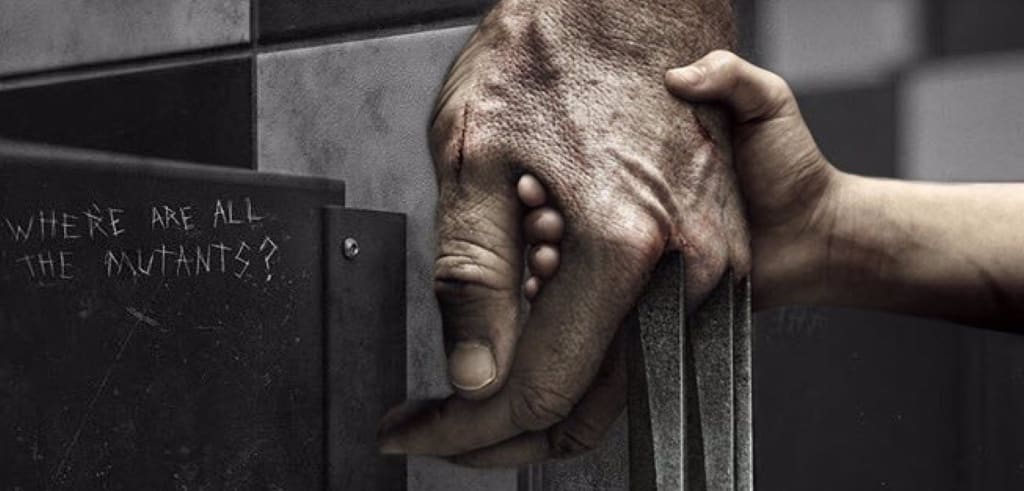‘Logan’ Unintentionally (Intentionally?) Tells Us a Tale of Immigration
With ‘Logan’, we receive a story about equality and immigration. NOTE: FULL SPOILERS FOR ‘LOGAN’ FOLLOW. YOU HAVE BEEN WARNED.

In the final act of ‘Logan’, the titular character attempts to assist a group of young mutants escape across the North Dakota border, as they flee from a militarized force who is out to eliminate them. Intentional or not, this final scene allows the film, in its entirety, to be seen as a tale about the horrors of immigration.
The ‘X-Men’ franchise has always been a representation of the “other” in society. The mutants and their fight for equality is a direct translation to many groups of people — women, minorities, LGBTQ+, et al — all who have fought (and still fight) for the same issue. It would only make sense that in the final film of the original ‘X-Men’ franchise, 17 years later, it would again hearken back to its roots and tell the audience a story about the ‘struggling other’ (in case you are not familiar, “other” is a term used to represent all non-white, non-heterosexual, non cissexual people — basically everyone that is not a prototypical straight, white man).
‘Logan’ takes place in 2029, a time where the mutant gene has seemingly gone extinct, or as we would later find out, been mostly eradicated by a disgruntled scientist named Zander Rice (who is mad that Logan killed his daddy [in ‘X-Men: Apocalypse’ apparently]). At the same time, Rice has gathered samples from a litany of mutants, and is using those samples to create mutant children that can be used as military weapons. At face value, this is bad in and of itself. These are innocent children — human beings who are being used for Transigen and Rice’s own means. The use of people, children specifically, as property and not humans relates to a series of real-world issues. Slave labor and child labor still exist, and there are groups of people who believe that certain groups of people should not exist (to put it really freaking nicely). Now the children, who were born this way, cannot help that they are mutants or that they were born in this company. In creating a group of mutant children who are looked at as property, ‘Logan’ tackles these issues headfirst, showing that not only should people have a right to live, but that they should be able to live freely and without fear. However, as it is in ‘Logan’ and many people in the world, that is sadly not the case.
When Transigen (the company that Rice leads) decides to eliminate the children because they are too difficult to control, they frame the children as dangerous beings. These children have no choice but to escape and fight for their survival. In order to be safe, the children decide to get across the North Dakota border and find refuge in a place called Eden — which also happens to be in Manitoba, Canada. As mentioned above, the final act is a long battle sequence that has Wolverine and the children fighting to get to safety. This entire sequence, including everything that has led to it, is a painstakingly clear analogy for the difficulties of im[migration] and refugees. These mutant kids who are being relentlessly hunted by a ruthless militarized force, is a direct relation to, for example, the millions of people who are being persecuted and hunted in Syria (2.5 million of which, more than 50%, are children). The mutant children, just like the Syrian refugees, are trying to flee from the people who see their existence as a threat. And just like the Syrian refugees, the children mean no harm — they just want to live without fear of being persecuted. They just want to live their lives. The only hope for the children, like the refugees, is to escape over the border and find a safe haven. The difference here being that the children, for the most part, are successful in surviving and making it across, whereas for the Syrian refugees a vast majority of them are still on the run. The news of the Trump administration’s “Muslim travel ban” does not help that, either.
However, ‘Logan’ presents another intriguing point. Wolverine is a Canadian mutant, who is trying to help children sneak into Canada — a place that will be much safer for them. It would seem then that ‘Logan’ looks into the future, and presents us with an idea that is currently true. More and more people (even American citizens) are seeking refuge in Canada. Even in ‘Logan’s’ dystopian future, Canada presents itself as a safer place than the USA. To go even further with said analogy, Laura, who is the crux of the film, is of Latin descent and has to escape the United States. The decision to make Laura a Latina is a poignant choice that further delves into the issues of immigration and refuge. It is no secret that USA-Mexico relations are an issue, and that many Mexicans seek refuge in the USA. Laura having no choice but to leave the States paints an all-too-vivid picture of people who have sought out refuge only to be denied, or perhaps even worse — accepted and then relentlessly vilified.
Think about it this way: when you watch ‘Logan’ or any of the other ‘X-Men’ films, do you root for the mutants? Or do you cheer on the antagonists who are trying to eradicate them? While these are enjoyable films, it is important to keep in mind their real-life counterparts. The mutants are the refugees (the immigrants), and they are every aspect of the ‘other’ that was mentioned prior. All in all, ‘Logan’ presents the audience with a tale of refuge, and shows that even if people are different or if one is afraid of them simply because of who they are, you cannot allow that difference or fear to put people’s lives at risk. To make it perfectly clear, we are the mutants — and we deserve to live.
About the Creator
Brandon Daniel
Staff writer for The Unbalanced. All things culture, entertainment, and everything in between. Find me on all socials at @branddnh. Find me on YouTube at 'Brooke & Brandon'.






Comments
There are no comments for this story
Be the first to respond and start the conversation.